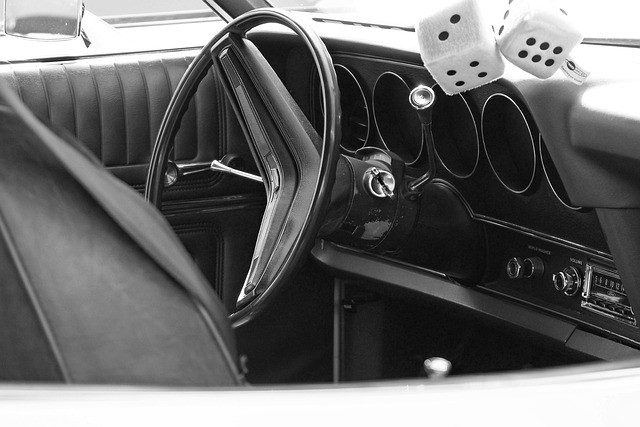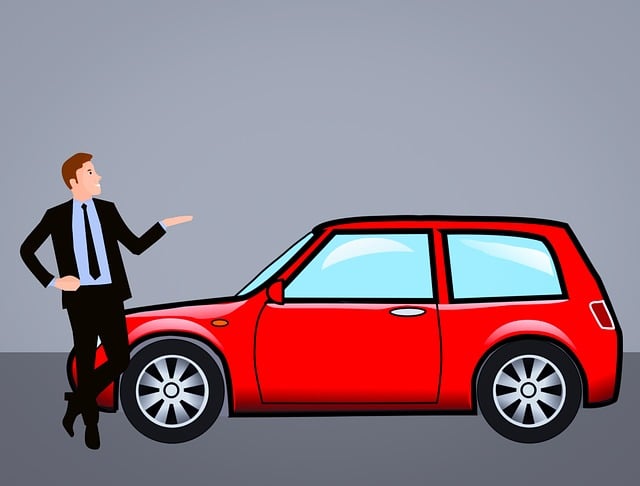Looking to register your car in California? This guide will walk you through the entire process, from understanding the DMV’s VIN verification to receiving your registration papers. First, grasp the importance of the dmv vin verification step, where your vehicle’s unique identifier is cross-checked for authenticity. Next, gather essential documents and prepare your car for inspection. Then, complete the California car registration application, submit payment, and await your official registration papers.
- Understanding the DMV VIN Verification Process
- Gather Required Documents for Car Registration
- Prepare Your Vehicle for Inspection
- Complete the California Car Registration Application
- Submit Payment and Receive Your Registration Papers
Understanding the DMV VIN Verification Process

When registering your car in California, understanding the DMV’s Vehicle Identification Number (VIN) verification process is crucial. This involves a thorough check to ensure the vehicle’s details match the information provided and are in compliance with state regulations. During this inspection, a trained professional will examine various components of your car, including its VIN plate, which uniquely identifies each vehicle. They’ll cross-reference this data with the manufacturer’s records to verify authenticity and history.
The DMV offers both in-person and, conveniently, mobile VIN inspections. With a mobile verification service, you can have this process done at your convenience, whether it’s at home or on the go. This modern approach streamlines the registration process, especially for busy individuals who prefer a hassle-free experience. By ensuring your car passes the VIN inspection, you’re taking a significant step towards completing your California vehicle registration smoothly and efficiently.
Gather Required Documents for Car Registration

Before you start the registration process, ensure you have all the necessary documents ready. The California Department of Motor Vehicles (DMV) requires specific paperwork for car registration, including proof of ownership and identification. One crucial step in this process is the DMV VIN verification, which ensures that your vehicle’s unique identifier matches the records.
Gathering these documents can be straightforward: your vehicle’s title, a current registration certificate (if applicable), valid government-issued ID like a driver’s license or passport, and proof of insurance are all essential. Additionally, consider having a mobile VIN inspection done to simplify the process, as some services offer convenient on-site or mobile vin verifier options, making it easier to verify your vehicle’s information accurately and efficiently.
Prepare Your Vehicle for Inspection

Before scheduling your car’s registration, ensure it’s prepared for the California DMV’s stringent inspection process. This includes a thorough cleaning to make any existing issues visible and easily detectable. Start by vacuuming the interior thoroughly and washing the exterior with a high-quality car shampoo to remove dirt and grime. Pay special attention to areas that are often overlooked, such as the wheel wells, door jams, and undercarriage.
Remember, the DMV will perform a Vehicle Identification Number (VIN) verification during the inspection, so it’s crucial to have your VIN plate clean and legible. Consider scheduling a mobile VIN inspection or vin inspection service to save time and ensure that every detail is accounted for before you bring your vehicle in for registration.
Complete the California Car Registration Application

To register your car in California, you’ll need to complete the California Car Registration Application. This form is available from the California Department of Motor Vehicles (DMV) and can be filled out online or in person. Ensure that all the required information is accurate, including your personal details, vehicle description, and the Vehicle Identification Number (VIN). The VIN is a crucial piece of data used for identification and verification purposes, including the dmv vin verification process.
One convenient option to streamline the registration process is through the use of mobile vin verification or a mobile vin inspection service. These services allow you to have your vehicle’s VIN verified digitally, saving time and effort compared to traditional methods. This digital approach can be particularly useful if you’re registering a car for the first time or transferring ownership.
Submit Payment and Receive Your Registration Papers

After completing your vehicle’s registration application, it’s time to submit the required payment. The California DMV offers several payment methods, including cash, credit card, or debit card. Once your payment is processed, the DMV will conduct a DMV vin verification to ensure the Vehicle Identification Number (VIN) is accurate and matches the details in their system. This step is crucial for maintaining the integrity of vehicle registration records.
Within a few days, you’ll receive your official registration papers via mail. These documents include important information about your vehicle’s registration status, insurance requirements, and any associated fees. It’s advisable to keep these papers in a safe place for future reference. Alternatively, many counties in California offer digital copies of registration documents through their websites, allowing easy access using the mobile vin verification or vin inspection tools provided by authorized services.
Registering a car in California is a straightforward process that requires understanding key steps, including the DMV VIN verification. By gathering essential documents, preparing your vehicle for inspection, completing the registration application, and submitting payment, you’ll have your California car registration papers in no time. Remember to keep these records updated to ensure compliance with state regulations.
